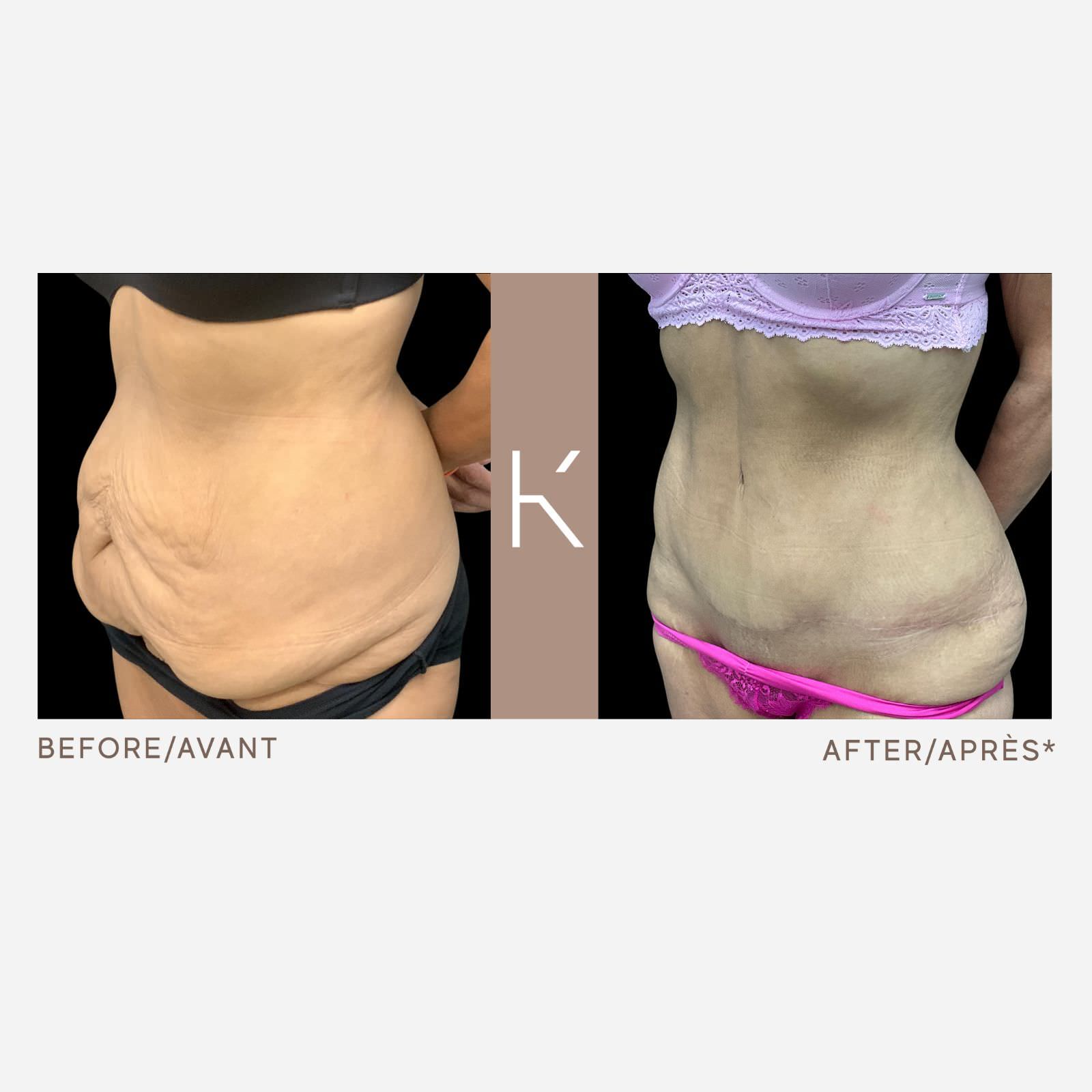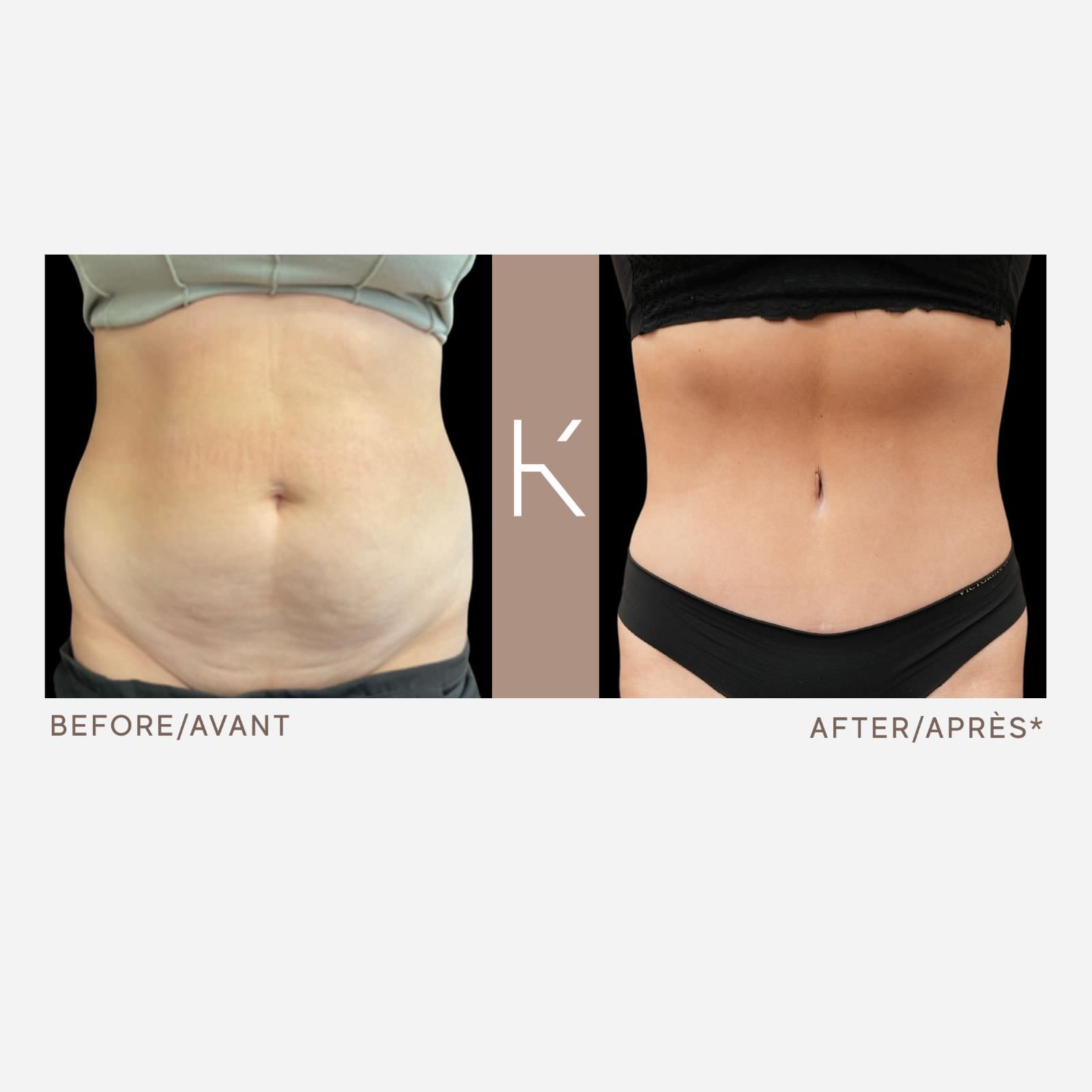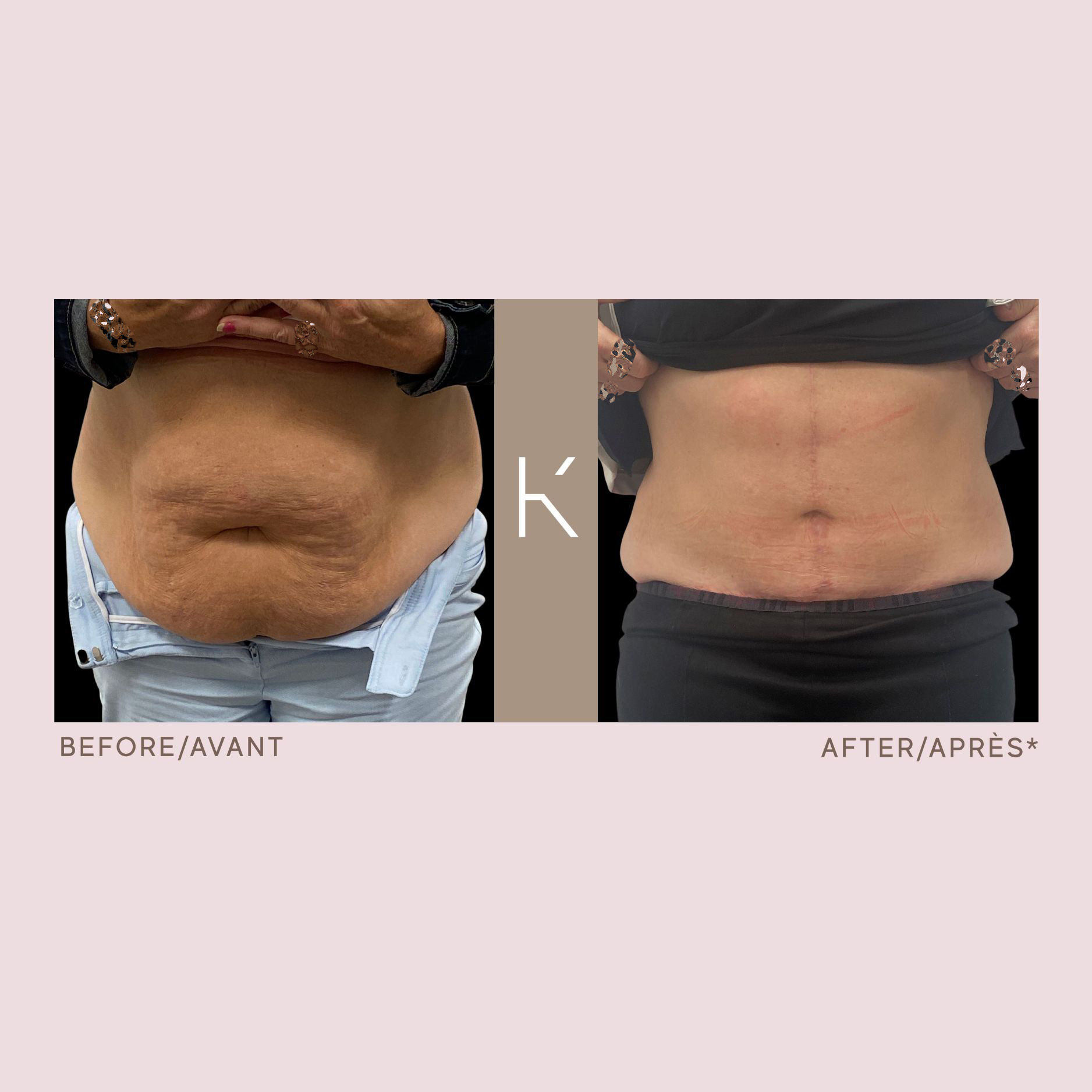Tummy Tuck
Tighten up your look with a waistline-transforming tummy tuck
Tighten up your look with a waistline-transforming tummy tuck Abdominoplasty, also known as a "tummy tuck," is a good option for those who have excess abdominal fat, loose skin, and weak abdominal muscles. This surgery is most common in women after childbirth, but also popular for people who have lost substantial weight, since loose abdominal skin does not improve with diet and exercise. If you have no loose skin but only excess fat, then you may benefit from liposuction alone. The main goal of a tummy tuck is to remove excess abdominal fat (often using liposuction), remove excess, sagging skin, and tighten the abdominal muscles. If maintained with a balanced diet and regular exercise, the results from an abdominoplasty can last a lifetime.The right candidate for abdominoplasty
The ideal candidate for a tummy tuck is someone who is healthy and has a stable weight but has excess fat or loose skin. For the best cosmetic results, the patient should reach as close as possible to their ideal weight before the surgery. The reason for this is that abdominoplasty is not meant to reduce weight but to remove excess skin. Combination treatment options are available for patients who want to remove excess fat as well as tighten skin.Different types of tummy tucks
The most common type of tummy tuck involves an incision in the lower abdomen (below the underwear line) and another around the belly button. Liposuction is often performed at the same time to remove excess fat. The lower abdomen's excess skin is removed, and the remaining skin and abdominal muscles are tightened, producing a flatter, more youthful abdomen.A mini tummy tuck uses smaller incisions and may not require the doctor to move the navel. Discussing your options with Dr. Karl Schwarz will help you make the best decision for your body.
Types of anesthesia used in tummy tuck surgery
Clinique K is equipped with state of the art anesthesia technology and medical practitioners to perform tummy tucks under general anesthesia (where the patient is completely asleep). Patients are monitored throughout the procedure to ensure their safety. Dr. Karl Schwarz will also discuss alternative options with you during your first consultation.Days following a tummy tuck and recovery time
After waking up from surgery, you will spend a couple of hours in the recovery room. Once you feel comfortable and ready, you are sent home (accompanied by a friend or family member) with pain medication and antibiotics to take as needed. Our staff at Clinique K will give you detailed post-operative instructions before going home. We recommend you have someone look after you for the first 1-2 days following surgery.You may experience discomfort and swelling of the surgical area for about one week. Most patients return to work after two weeks, provided there is no strenuous activity or heavy lifting. Exercise and heavy lifting can resume after four to six weeks.
Some possible risks and complications of tummy tuck surgery
All surgeries carry risks, but when done by highly skilled and experienced doctors and in a reputable clinic such as Clinique K those risks are kept to a minimum. Abdominoplasty risks include discomfort and swelling during healing, bleeding, infection, and recurrence of abdominal laxity. During the initial consultation, Dr. Karl Schwarz makes a point of discussing all the risks and benefits of the surgery.Before & after
Disclaimer: These photos/videos are published for reference only to provide information on the nature of the procedure. They do not constitute a guarantee of results.
Please take note that informed and written consent was obtained from each patient, and they have understood that their pictures/videos/images will be presented on social media platforms.




























